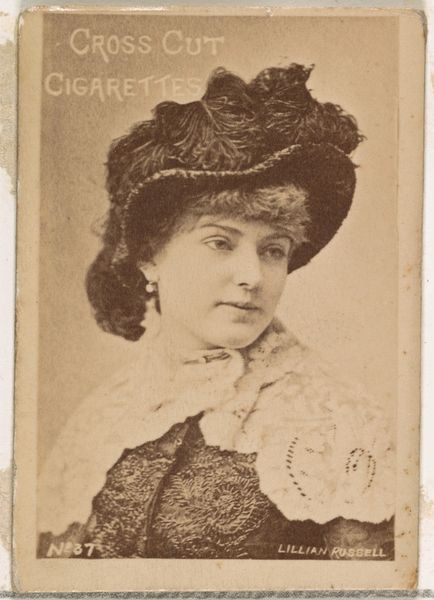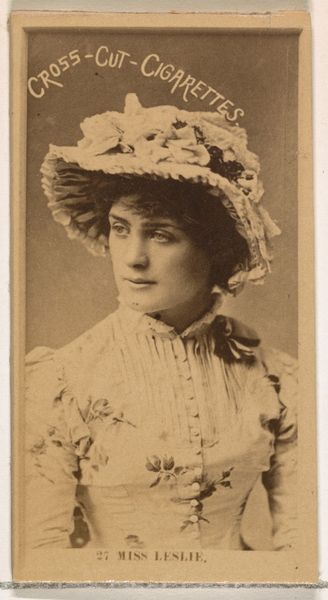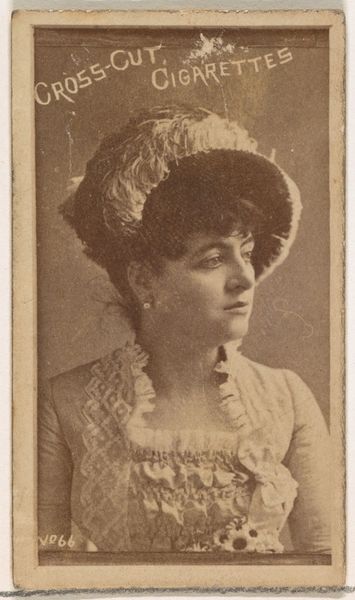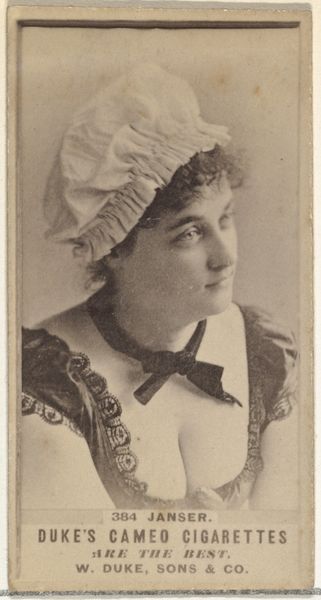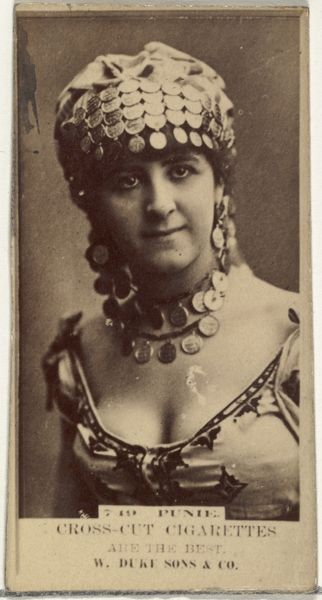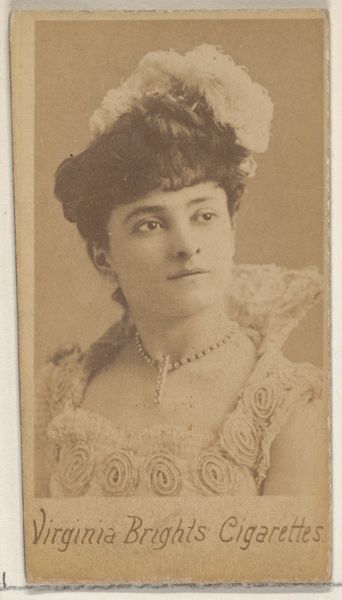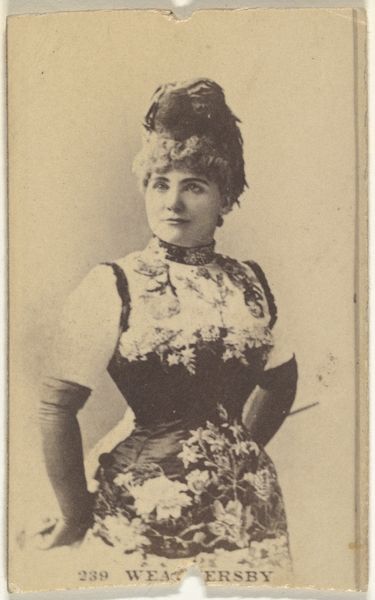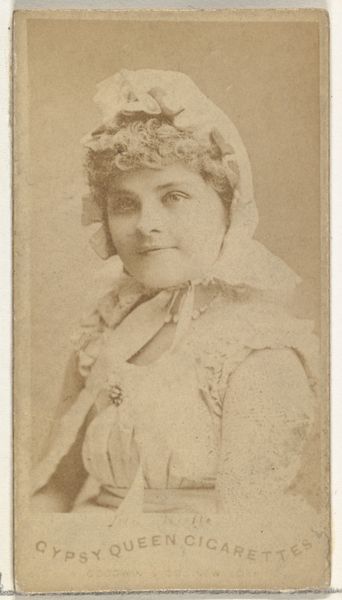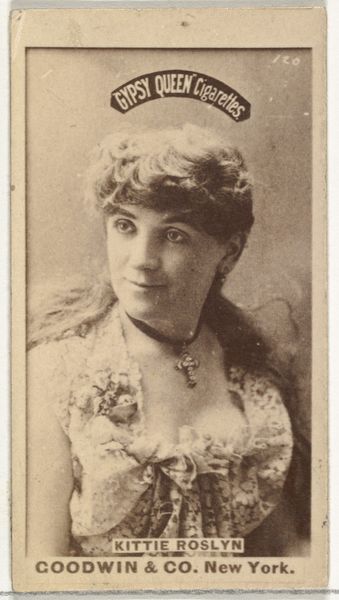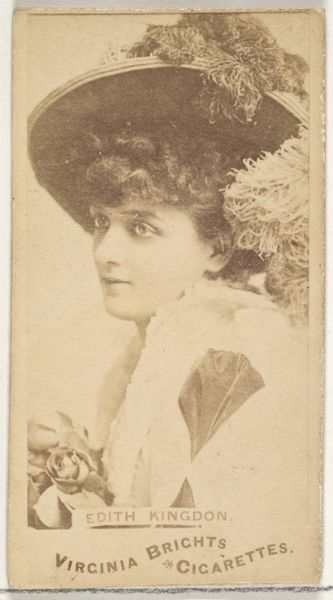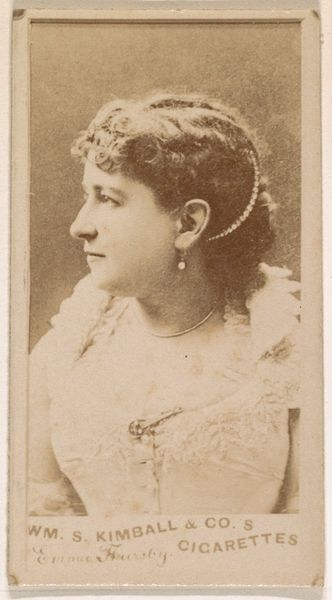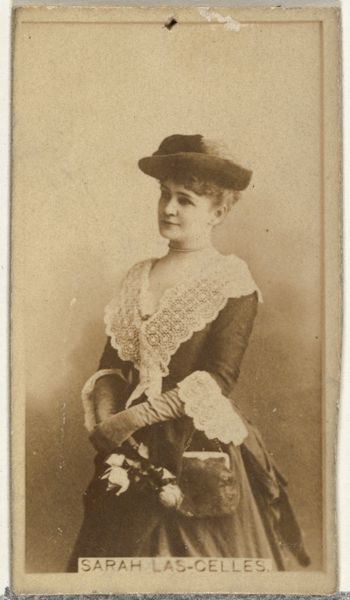
Card Number 37, Lillian Russell, from the Actors and Actresses series (N145-2) issued by Duke Sons & Co. to promote Cross Cut Cigarettes 1880s
0:00
0:00
print, albumen-print
#
portrait
#
print photography
# print
#
albumen-print
Dimensions: Sheet: 2 5/8 × 1 7/16 in. (6.6 × 3.7 cm)
Copyright: Public Domain
Editor: This is an albumen print from the 1880s by W. Duke, Sons & Co., titled "Card Number 37, Lillian Russell". It's a small, delicate portrait that appears to be an advertisement for cigarettes. I'm curious about its cultural context; what kind of statement was it making? Curator: These cigarette cards were immensely popular, and tell us a lot about celebrity culture and marketing strategies of the late 19th century. The commodification of actresses like Lillian Russell, placing her image alongside a tobacco product, speaks to the evolving public role of women and the power of advertising in shaping societal desires. What does the style of her clothing say to you? Editor: She seems quite adorned! The large hat with feathers, the lacy shawl…it seems meant to convey wealth and sophistication, and align it with the brand. Curator: Exactly. Duke aimed to associate their "Cross Cut Cigarettes" with aspirational ideals. How might the relatively new medium of photography influence its public impact? Editor: It would have made Russell's image far more accessible than painted portraits, and would have helped her rise to prominence beyond the stage! It would also mean, for many, this small card may have been their only form of interaction with celebrities. It democratizes access while also commercializing the human image. Curator: Precisely. It shows how technology and commercial interests were intertwining to shape popular culture. What else stands out? Editor: I now realize, understanding its use as advertisement, that the "japonisme" is a perfect aesthetic pairing. The framing of the photo and composition mirror this trend, which means that tobacco wanted to represent themselves with a feeling of luxurious import and "internationalism," even! Curator: Absolutely. That trend also catered to a specific class. And seeing how they targeted women as consumers then is rather telling. Editor: This quick overview really put the card into a much bigger picture. It highlights so many layers! Curator: Agreed, and thinking of it not just as an image but also as a cultural artifact, adds even more depth.
Comments
No comments
Be the first to comment and join the conversation on the ultimate creative platform.
